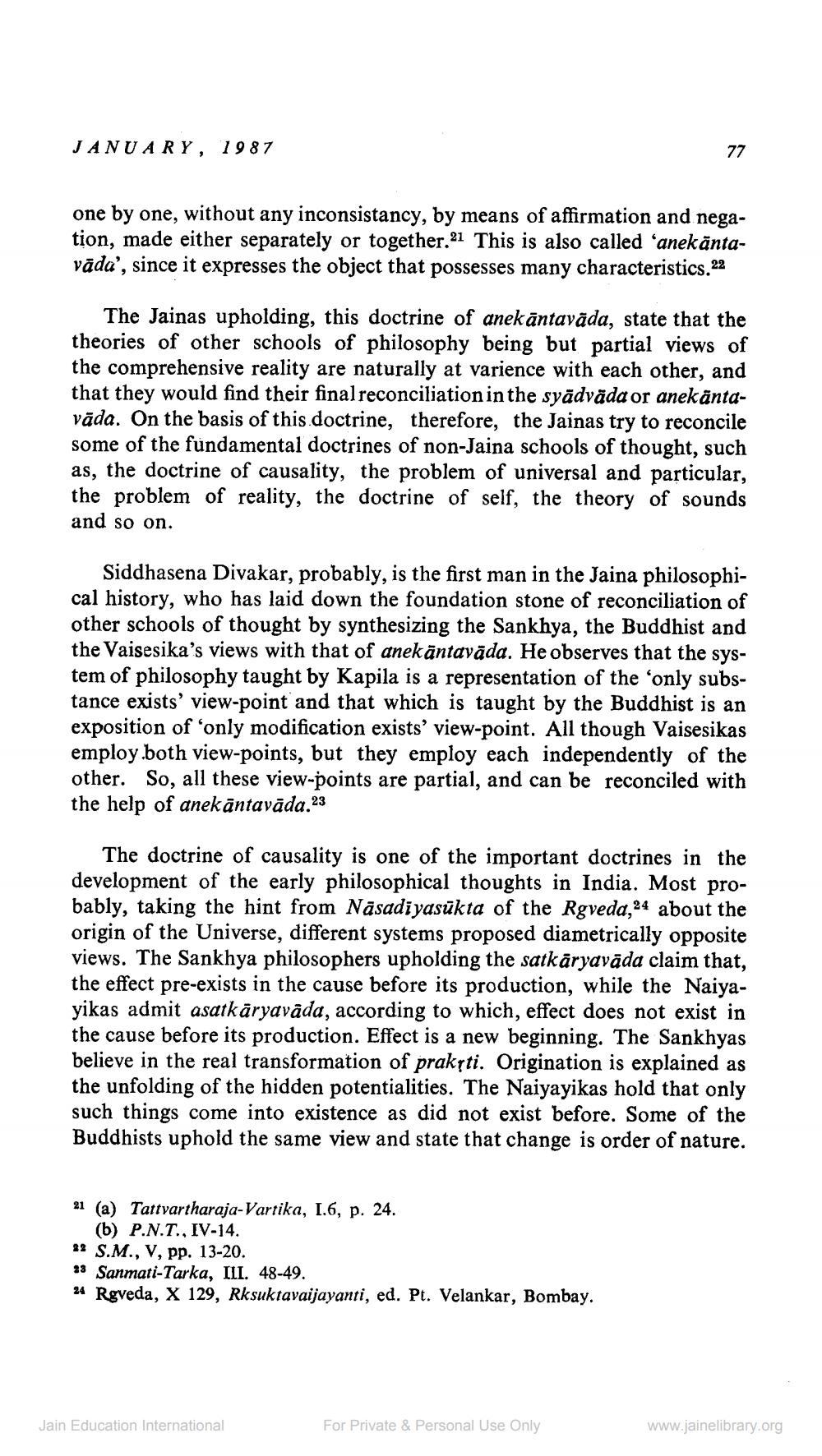________________
JANUARY, 1987
one by one, without any inconsistancy, by means of affirmation and negation, made either separately or together.21 This is also called 'anekantavāda', since it expresses the object that possesses many characteristics.22
The Jainas upholding, this doctrine of anekāntavāda, state that the theories of other schools of philosophy being but partial views of the comprehensive reality are naturally at varience with each other, and that they would find their final reconciliation in the syädväda or anekantavāda. On the basis of this doctrine, therefore, the Jainas try to reconcile some of the fundamental doctrines of non-Jaina schools of thought, such as, the doctrine of causality, the problem of universal and particular, the problem of reality, the doctrine of self, the theory of sounds and so on.
Siddhasena Divakar, probably, is the first man in the Jaina philosophical history, who has laid down the foundation stone of reconciliation of other schools of thought by synthesizing the Sankhya, the Buddhist and the Vaisesika's views with that of anekantaväda. He observes that the system of philosophy taught by Kapila is a representation of the 'only substance exists' view-point and that which is taught by the Buddhist is an exposition of 'only modification exists' view-point. All though Vaisesikas employ both view-points, but they employ each independently of the other. So, all these view-points are partial, and can be reconciled with the help of anekāntavāda.23
77
The doctrine of causality is one of the important doctrines in the development of the early philosophical thoughts in India. Most probably, taking the hint from Nasadiyasūkta of the Rgveda,24 about the origin of the Universe, different systems proposed diametrically opposite views. The Sankhya philosophers upholding the satkāryavāda claim that, the effect pre-exists in the cause before its production, while the Naiyayikas admit asatkāryavāda, according to which, effect does not exist in the cause before its production. Effect is a new beginning. The Sankhyas believe in the real transformation of prakṛti. Origination is explained as the unfolding of the hidden potentialities. The Naiyayikas hold that only such things come into existence as did not exist before. Some of the Buddhists uphold the same view and state that change is order of nature.
21 (a) Tattvartharaja-Vartika, I.6, p. 24.
(b) P.N.T., IV-14.
22 S.M., V, pp. 13-20.
23 Sanmati-Tarka, III. 48-49.
24 Rgveda, X 129, Rksuktavaijayanti, ed. Pt. Velankar, Bombay.
Jain Education International
For Private & Personal Use Only
www.jainelibrary.org




